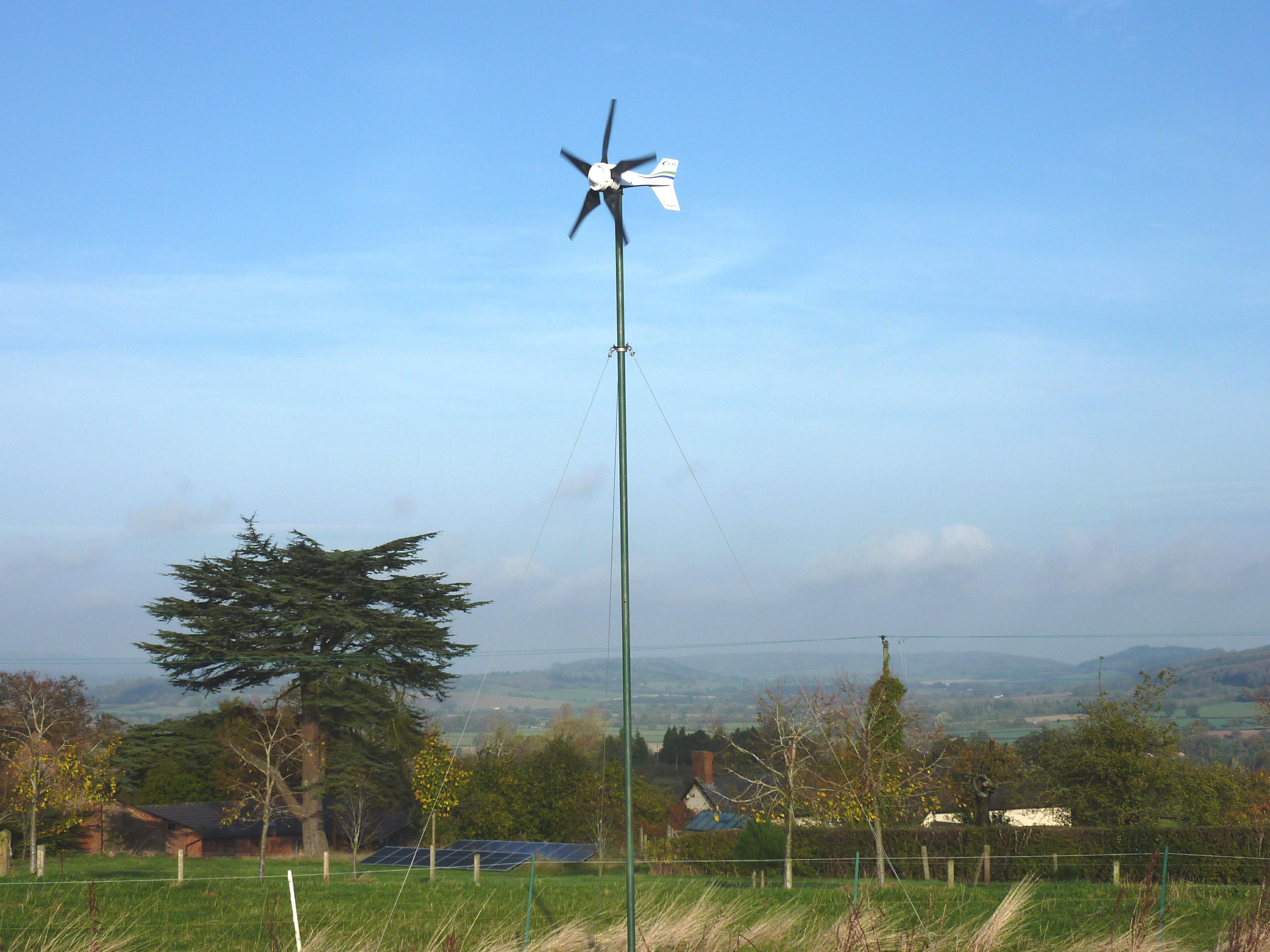

To have a successful home wind operation, the average wind speed at your location should average at least nine miles per hour. (You can buy windmills as small as nine feet tall with blades spanning six feet, though most are sized more in the range of 60 feet tall with 23-foot blade diameters.) One new turbine creating buzz in the wind community is the Skystream 3.7, which is applauded for its size (10-foot blades), efficiency at low wind speeds (they can perform well with average annual wind speeds above 12 mph), and relatively low price ($15,000). In going through the checklist, it quickly becomes apparent why we don't all have windmills in our backyards, even though the technology is commercially available. Department of Energy (DOE) suggests a checklist to make sure small wind projects are a right choice for individual homeowners: Is there enough wind? Do you have enough space? Are towers allowed in your area? And finally, how much energy can you produce?
HOME WIND TURBINE TOWERS HOW TO
The cost-effective, low-emissions, and resilient lumber wind towers could play a major role in this.Q: Why can't we install windmills in our backyards and trap the power individually for our personal use? Is the limitation how to store it and feed it into my electrical circuits, or what? Is it cost, or sound pollution to my neighbors, or has a household system just not been developed yet?Īsked by Maria Schmidt, '79, Fort Worth, Texas

The lamination on the lumber also makes the towers impervious to water, enabling them to withstand higher humidity.Īccording to an International Energy Agency report, the demand for wind turbines is going to increase to 30,000 per year, if we want to get to net-zero by 2050.

According to Modvion, not only are they as strong as steel towers but their light weight doesn’t require the extra reinforcement like steel does to achieve that strength. Modvion also emphasizes the strength of their LVL towers. This means a carbon dioxide storing capacity of 540 tonnes and a net climate impact of minus 300–400 tonnes of carbon dioxide,” Modvion said in a statement. A 110m tall tower weighs 180–300 tonnes, depending on the size of the turbine being supported. “ A wooden construction stores approximately 1.8 tonnes of carbon dioxide per tonne of wood. What’s even more impressive is that the wood itself will store carbon. Using lumber instead of steel will also slash the production carbon emissions by 90 percent or more. The sections will be much lighter and easier to transport than steel versions. Modvion is carving out giant curved slabs of laminated veneer lumber (LVL) that will be glued together into the tubed sections of the tower. Together with Stora Enso, we can enable both,” said Otto Lundman, CEO of Modvion. “To solve the climate crisis, we need more renewable energy as well as increased use of sustainable, wooden constructions. They are currently working on one three times that heigh, aimed to be a 300-foot tower, for Varberg Energi, a Swedish energy company. Their prototype was completed in 2020 and was 100 feet tall. Modvion began work on their timber turbine towers a few years ago. The Swedish manufacturer Modvion has partnered with Stora Enso, one of the oldest lumber companies in the world, to build wind turbine towers out of wood. Unknowingly, they may have made a wonderful suggestion on how to improve wind energy. Opponents of wind energy have criticized the carbon footprint of the steel required to build wind towers and turbines. While wind turbines only cost 11 grams of carbon per kilowatt-hour (compared to the combustion of natural gas at 450 grams), there is always room for improvement.


 0 kommentar(er)
0 kommentar(er)
